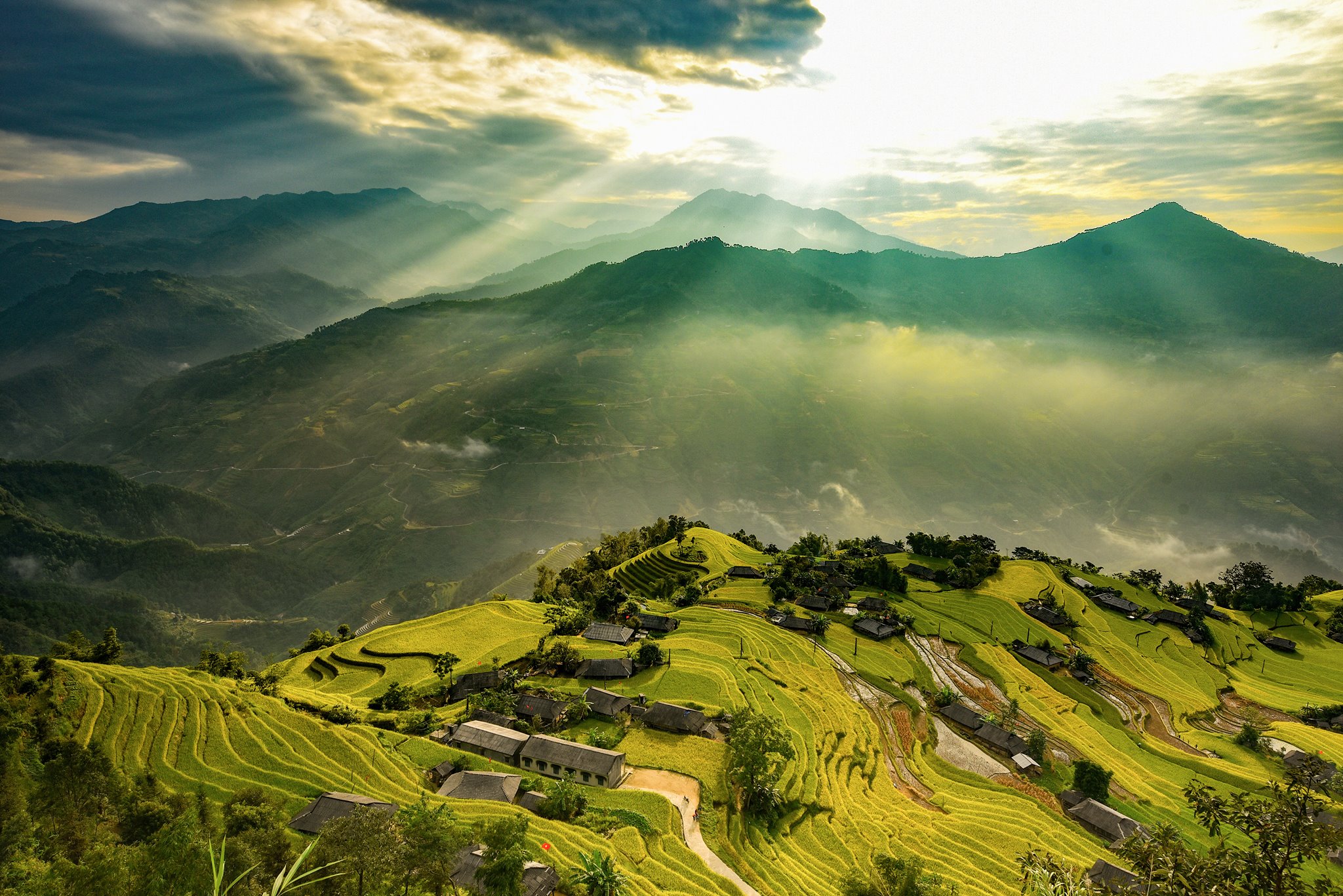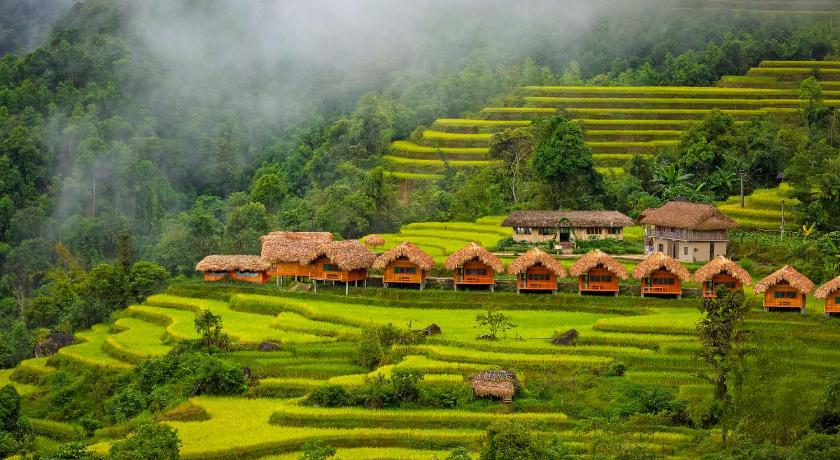Every year, from the end of September to the beginning of October, many tourists flock to Ha Giang. They do not want to miss the breathtaking scenery when the rice on the terraced fields turns bright yellow. One of the destinations that attract visitors island of Hoang Su Phi.
Hoang Su Phi is a highland district, about 100km to the west of Ha Giang. In the past, this land originally belongs to Binh Chau, Tuyen Quang province. Currently, Hoang Su Phi has 24 communes and 1 town including 4 border communes with a total border length of more than 40km.

Since the district is located on the upper stream of Chay River so the majority of the land is mountainous
with steep slopes and divided by many streams. This is a long-term settlement of
people from 12 ethnic groups, of which the Nung, Dao, Tay, Mong, La Chi are the majority.
It can be said that Hoang Su Phi is one of the greatest trekking points in Northern Vietnam thanks to its
spectacular and pristine scenery. When trekking around the district, visitors will be surprised to see
thousands of terraced fields spread all over, winding around the hillsides and mountains. If the weather
is nice, you can see the sun rays penetrate through the clouds down to the rice paddies, making the
scenery incredibly charming.
The popular itinerary for Hoang Su Phi trekking tour
Day 1: Hanoi – Thong Nguyen – Nam Hong
From Hanoi, take a bus and travel to Thong Nguyen of Hoang Su Phi district. You can have lunch at Ham Yen and then continue heading to Thong Nguyen.

Book a homestay in Nam Hong village and leave your bags in the homestay, you can trek around Nam
Hong village with the natural scenery. Don’t forget to participate in making tea, beans and picking
vegetables with the local people there and learn to cook some traditional dishes for diner with Dao
family in your homestay.
Day 2: Nam Hong – Khoa Thuong – Nam Ai – Nam Son
After having breakfast, you will walk along the 7.5 km – long village road from Nam Hong to Khoa Thuong to admire the amazing terraced fields and get a lunch Khoa Thuong.
In the afternoon, you will continue to walk to Nam Ai village to enjoy the beauty of the terraced fields and explore Nam Ai village, where local people have the tradition of raising cattles right under their stilt houses.

Then you can move to Lê Hông Phong village, Nam Sơn commune to find a homestay of Tày people
to stay overnight.
Day 3: Nam Son – Ho Thau – Chieu Lau Thi
After having breakfast in Nam Sơn, keep trekking to Lùng Thàng village where you can admire the
majestic beauty of the mountains. Then come to Chien Thang village for lunch break. After that, you will
uphill for 3 hours to reach Chieu Lau Thi peak where you will be blown away by the incredible immense
clound.
The peak is 2402 meters high compared to sea level and trail which leads to the peak is very rugged. As
a result, the trek will be quiet exhausting but once you reach the top and look down to the spectacular
view below, you’ll forget all the tiredness right away.
You can wait for the sunset on the peak, watching the cloud slowly move and the horizon is changed
colour that definitely an memorable moment you will want to retain for a long time.
Day 4 :Chieu Lau Thi – Ho Thau – Luoc village – Vinh Quang
After breakfast, start to trek to Luốc village. The road to Ban Luoc, though not as marvelous as the Dong
Van stone plateau, is still enough to fascinate many adventurous travelers. Coming here, you’ll see the
ripe rice fields like soft silk strips winding around the green mountainside and the traditional stilt houses
scattering at the foothills.
You will have lunch at Suoi Thau Village before getting to Vinh Quang town, where you can find a place
to stay overnight.
Day 5: Vinh Quang – Ha Giang
After breakfast, you can walk around the town of Vinh Quang to explore the local lifestyle and enjoy
some Shan Tuyet tea, a special drink of the highland areas.
Then, come back to the homestay, pack your bags and return to Ha Giang city by bus to finish
your Hoang Su Phi trekking tour.
Tips to keep in mind:
- Bring enough water
- Bring enough cash as you can hardly find any ATMs when you trekking in the local villages
.
- Bring sunscreen, raincoat, insect repellants, first – aid kit
- Book your accommodations in advance.







